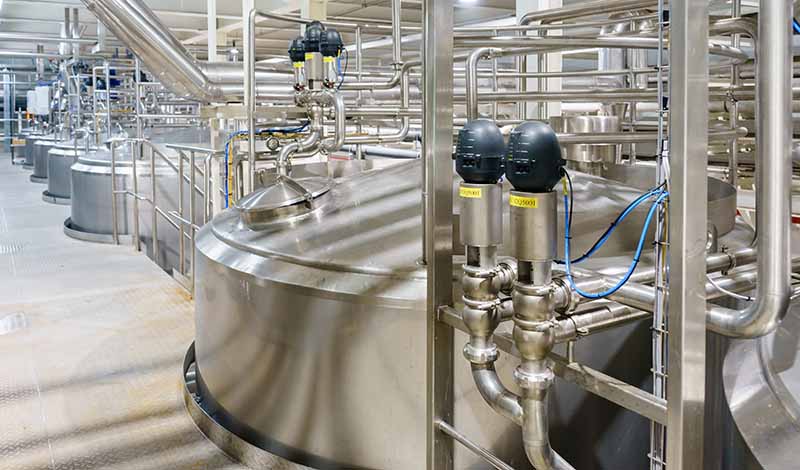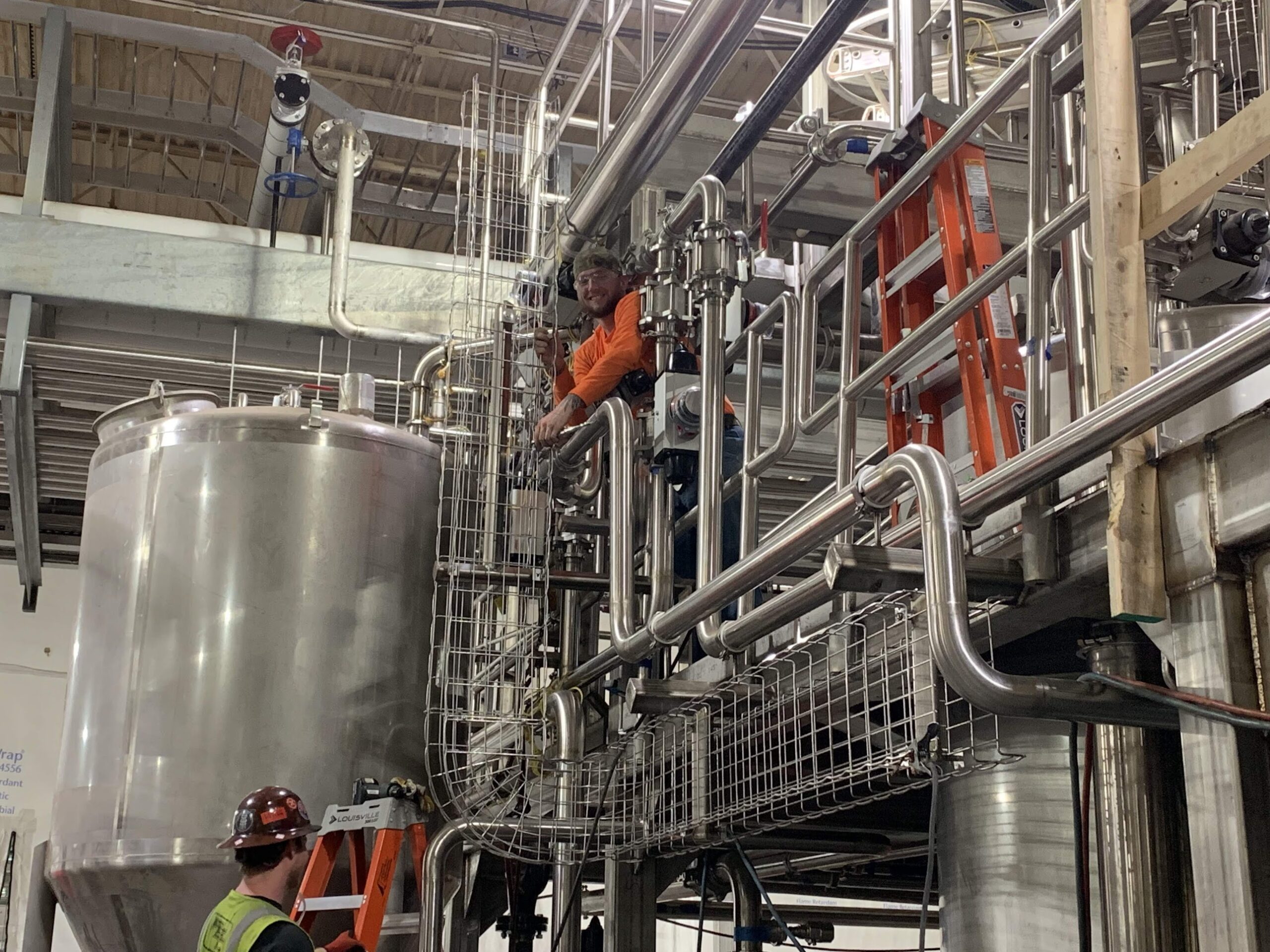Piping systems are essential for transporting fluids, gasses, and sometimes solids in various industries. They play a critical role in ensuring smooth operations and maintaining safety across different sectors. Knowing the contrast between industrial and sanitary pipes is important for choosing the right one for your needs.
In this blog post, we will compare industrial piping and sanitary piping, highlighting their distinct purposes and unique features. By understanding these differences, you can make informed decisions for your projects, ensuring efficiency and compliance with industry standards. Both types of piping systems are designed to meet the demands of their respective applications. They offer tailored solutions for a wide range of industries.
Choosing the appropriate piping system is vital for the success and longevity of your operations. Whether you are in automotive manufacturing, food processing, or pharmaceuticals. Knowing the right piping system can make a significant difference in performance and safety. Let’s dive into the specifics of industrial and sanitary piping to help you make the best choice for your business.

Industrial piping is designed to transport a wide range of substances within industrial settings. These substances can include chemicals, water, steam, oil, and gasses. The primary purpose of industrial piping is to ensure efficient and safe transportation of these materials.
Industrial piping systems are integral to power plants, chemical processing plants, oil refineries, manufacturing facilities, and water treatment plants. Their robust design ensures they can handle high pressures and temperatures, making them suitable for heavy-duty applications.
Industrial piping is widely used in various sectors due to its versatility. In power plants, it transports steam and cooling water. Chemical processing plants use it for moving chemicals and byproducts.
Oil refineries rely on industrial piping for crude oil processing and distribution. Manufacturing facilities use these systems for different fluids essential in production processes. Water treatment plants also use industrial piping to manage water flow and purification processes.
Industrial piping can be made from various materials such as carbon steel, stainless steel, cast iron, PVC, and CPVC. Each material is chosen based on its durability and resistance to specific conditions.
Carbon steel is preferred for its strength and ability to handle high pressure. Stainless steel is used for its corrosion resistance and suitability for high-temperature applications. PVC and CPVC are chosen for their chemical resistance and ease of installation.
Designing industrial piping involves several key considerations. Durability is crucial to withstand harsh conditions. The piping must also resist corrosion to maintain integrity over time.
Compliance with industry standards ensures safety and performance. Maintenance is another important factor, as systems need to be easily inspected and repaired. These considerations ensure that industrial piping systems remain reliable and efficient.

Sanitary piping is designed to transport substances that require high levels of hygiene and cleanliness. This type of piping is essential in industries where contamination must be minimized.
Sanitary piping is commonly used in food and beverage processing, pharmaceuticals, biotechnology, dairy processing, and cosmetics. Its primary purpose is to ensure that transported materials remain uncontaminated and safe for consumption or use.
Sanitary piping is vital in industries that handle consumable or sensitive products. In food and beverage processing, it ensures that products remain safe and uncontaminated. Pharmaceutical companies use sanitary piping to maintain the purity of their products.
Biotechnology firms rely on sanitary piping for precise and clean transport of biological materials. Dairy processing plants use it to ensure milk and dairy products stay hygienic. Cosmetics manufacturers also depend on sanitary piping to maintain product integrity.
Sanitary piping is typically made from materials that resist corrosion and withstand frequent cleaning. Stainless steel, particularly grades 304 and 316, is commonly used due to its durability and ease of cleaning.
Special food-grade plastics are also used in some applications. These materials ensure that sanitary piping systems meet stringent health and safety standards, preventing contamination and ensuring product safety.
Sanitary piping systems are designed with hygiene as a top priority. Smooth interior surfaces prevent the buildup of bacteria and other contaminants. These systems are also easy to clean, often incorporating clean-in-place (CIP) technologies.
Compliance with health standards, such as those set by the FDA and USDA, is essential. Minimizing areas where contaminants can accumulate, such as dead ends and crevices, is a key design focus. These considerations ensure sanitary piping systems maintain high cleanliness levels.
When comparing industrial piping and sanitary piping, several differences stand out. Industrial piping is designed for durability and can handle a wide range of substances and conditions. Sanitary piping, however, focuses on cleanliness and preventing contamination.
The materials used in each type reflect their purposes. Industrial piping uses robust materials like carbon steel and cast iron. However, sanitary piping relies on stainless steel and food-grade plastics. Design considerations also differ, with industrial piping prioritizing strength and maintenance, and sanitary piping emphasizing easy cleaning and hygiene.

Sanitary tubing and BPE (Biopharmaceutical Equipment) tubing are crucial components in sanitary piping systems. Sanitary tubing is used in applications where cleanliness is paramount, such as food and beverage processing and pharmaceuticals.
BPE tubing is specifically designed for the biopharmaceutical industry, meeting stringent standards for purity and cleanliness. These types of tubing are essential for maintaining high hygiene standards, ensuring that products remain uncontaminated.
Shipping and handling piping materials, especially cut tubing, require careful logistics to maintain quality. Precision in cutting and handling ensures that tubing fits perfectly during installation, reducing wastage and improving efficiency.
Freight shipping of these materials must consider protection against damage and contamination. Proper packaging and handling are crucial to maintaining the integrity of both industrial and sanitary piping during transport.
Selecting the right piping system depends on your industry and specific needs. For industries requiring high cleanliness, such as food and beverage or pharmaceuticals, sanitary piping is essential. For heavy-duty industrial applications, robust industrial piping is more suitable.
Consider the materials, design, and specific requirements of your project when choosing between industrial and sanitary piping. Consulting with experts like those at PEC can help you make an informed decision. We ensure your piping system meets all necessary standards and operational needs.
Understanding the differences between industrial and sanitary piping helps in making informed decisions for your projects. Both types of piping systems are essential in their respective industries, offering unique benefits tailored to their applications.